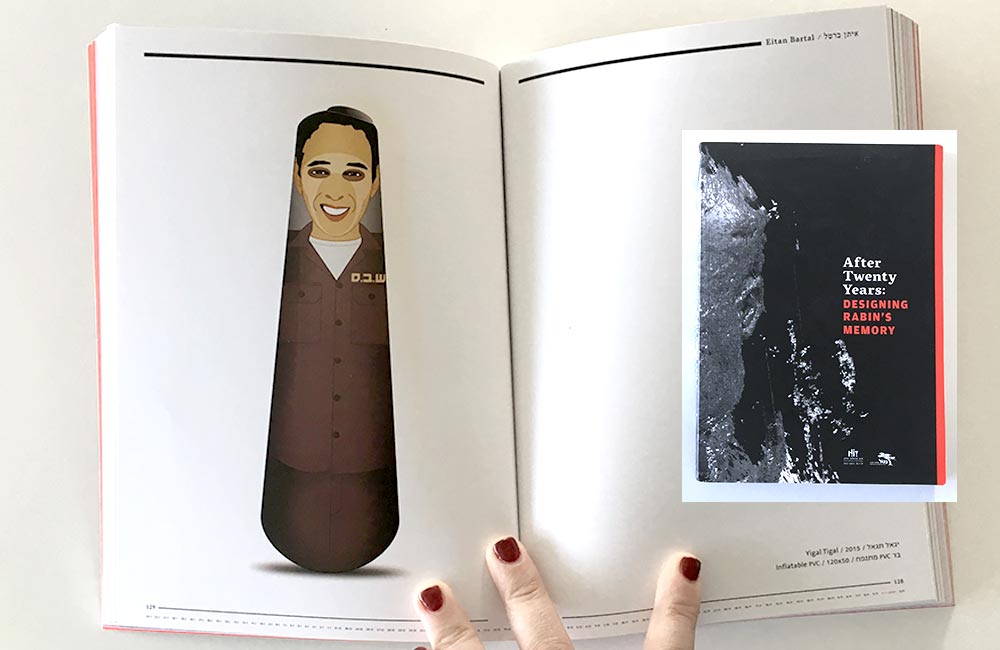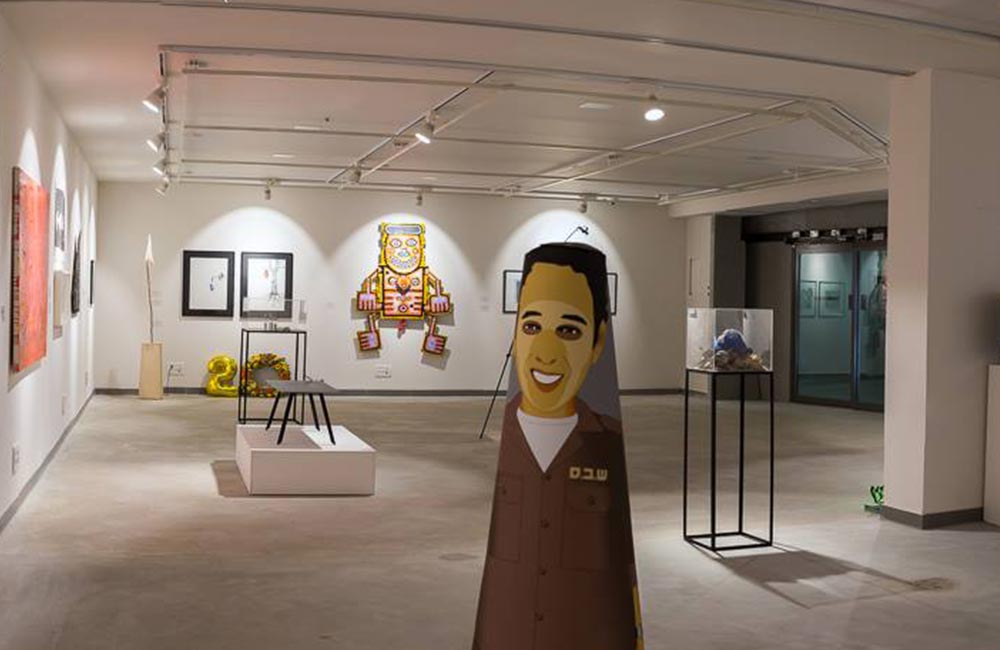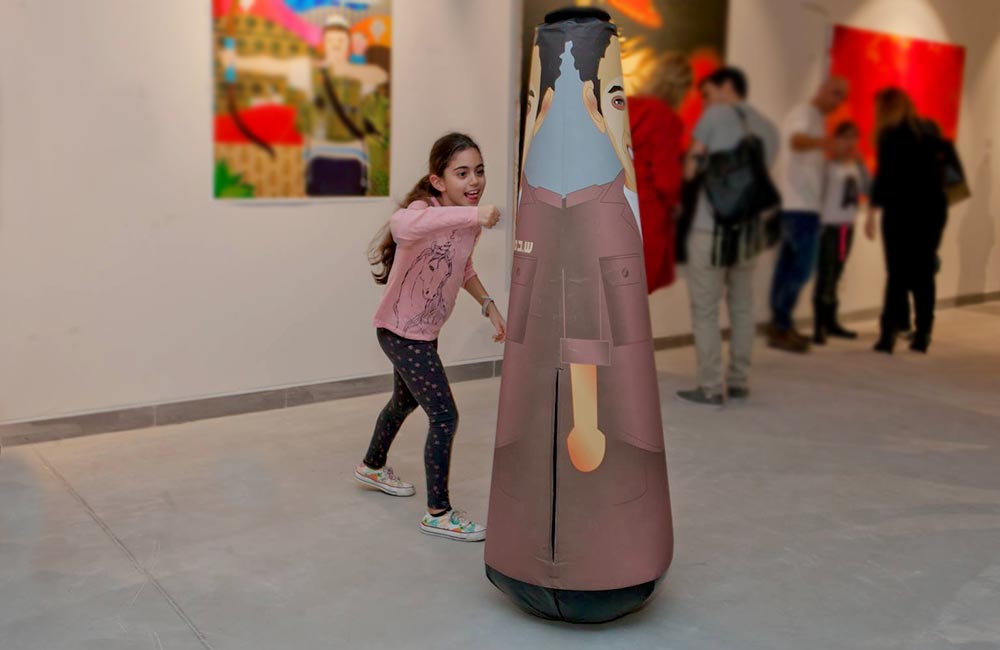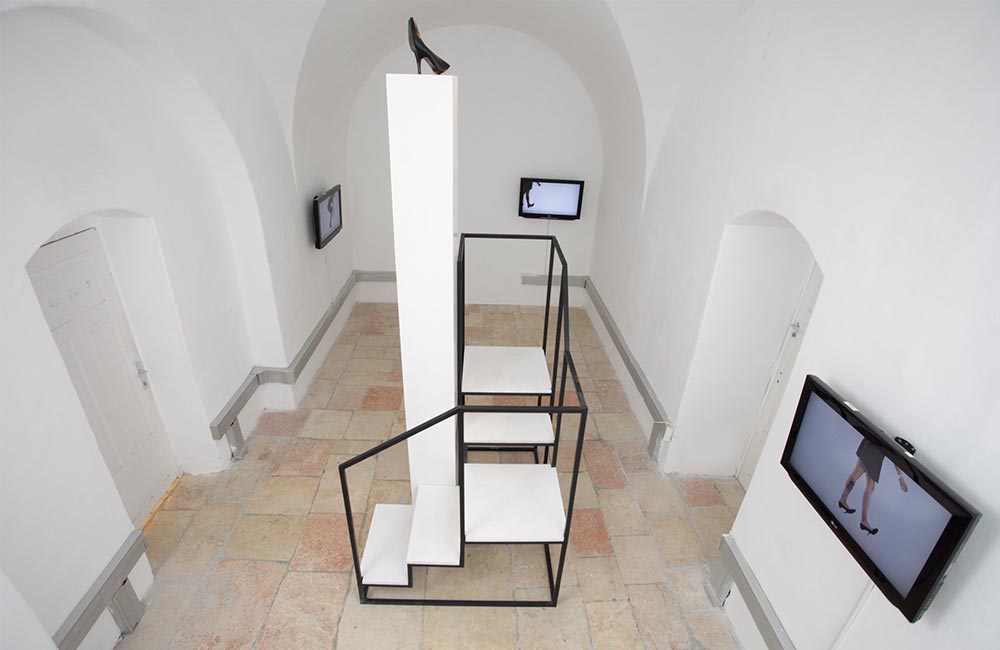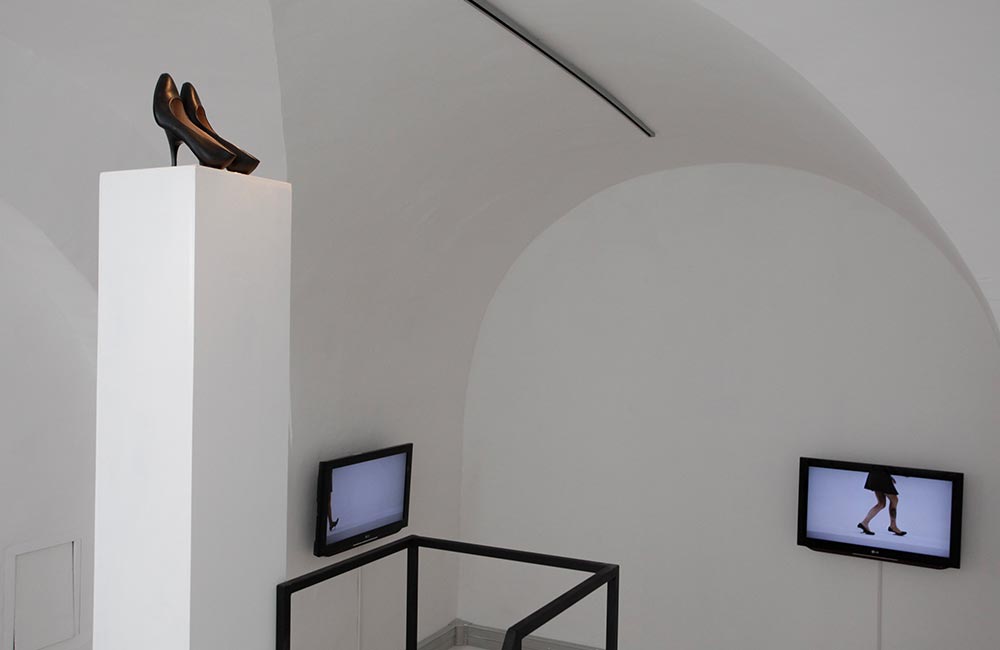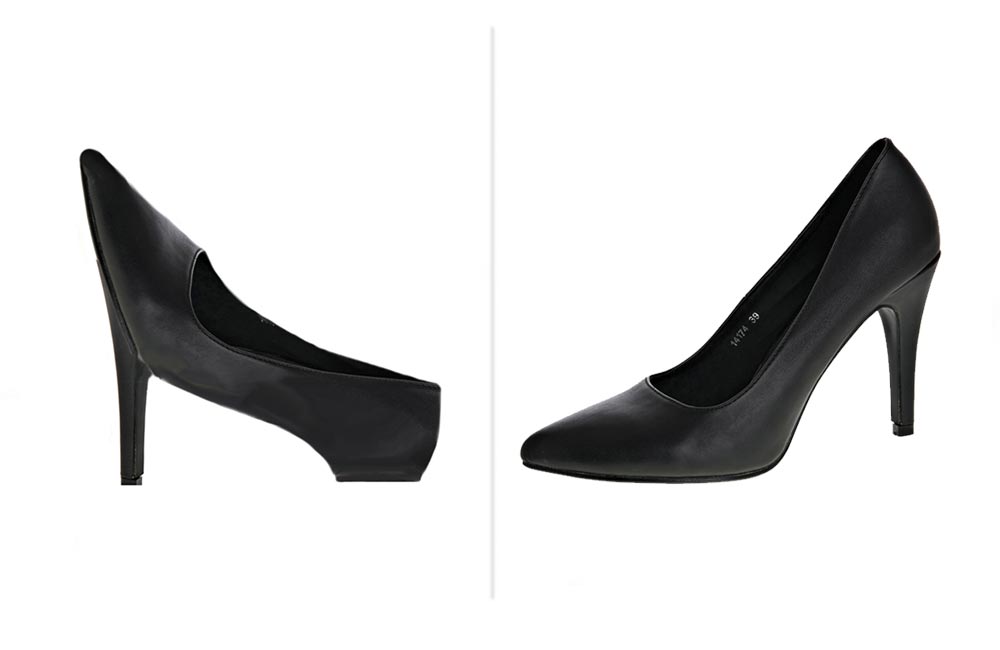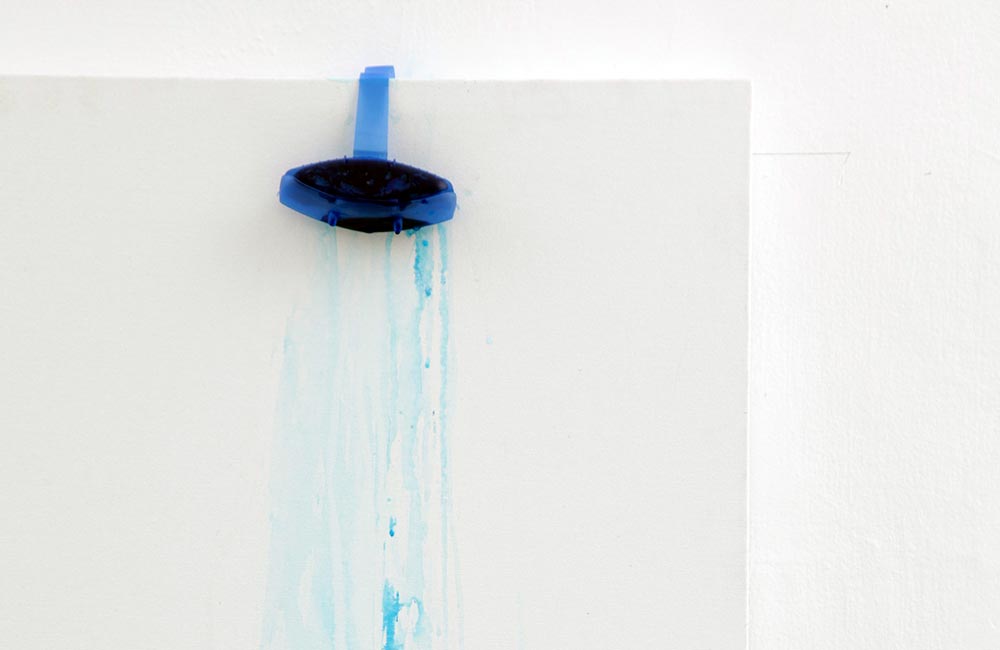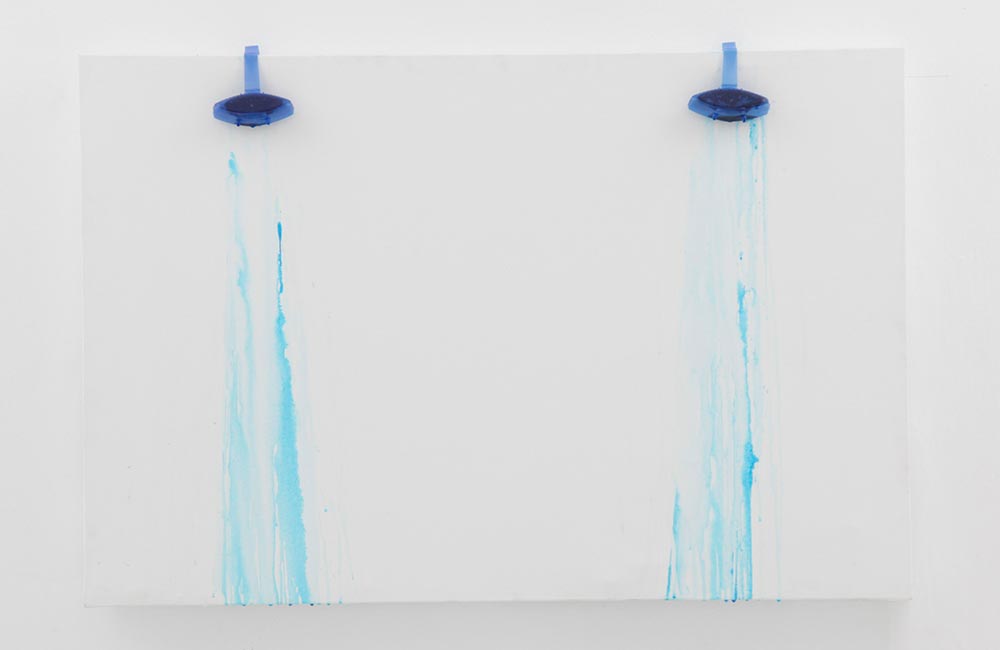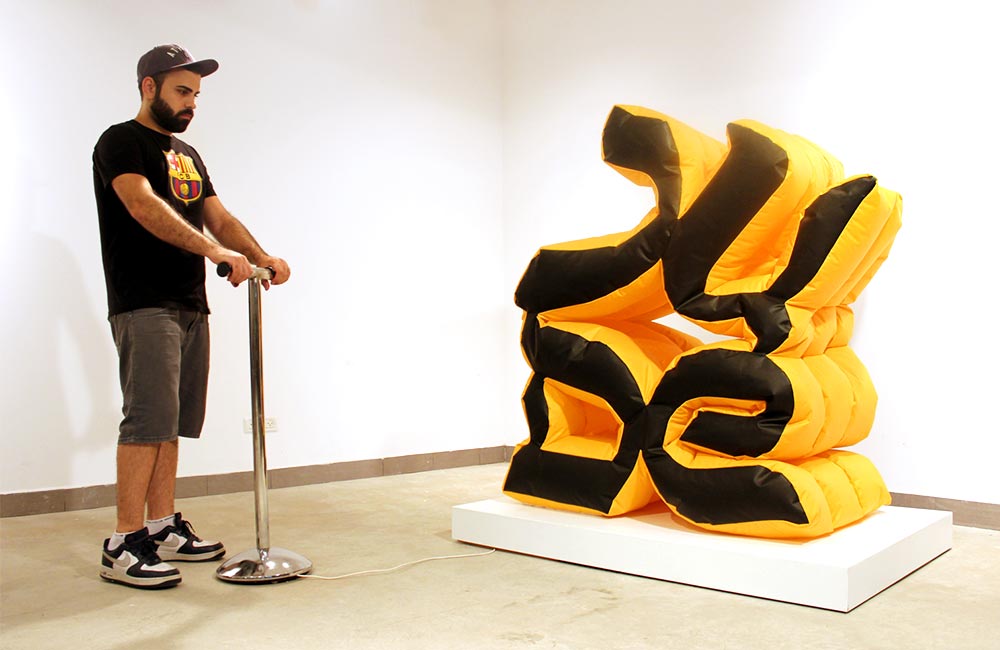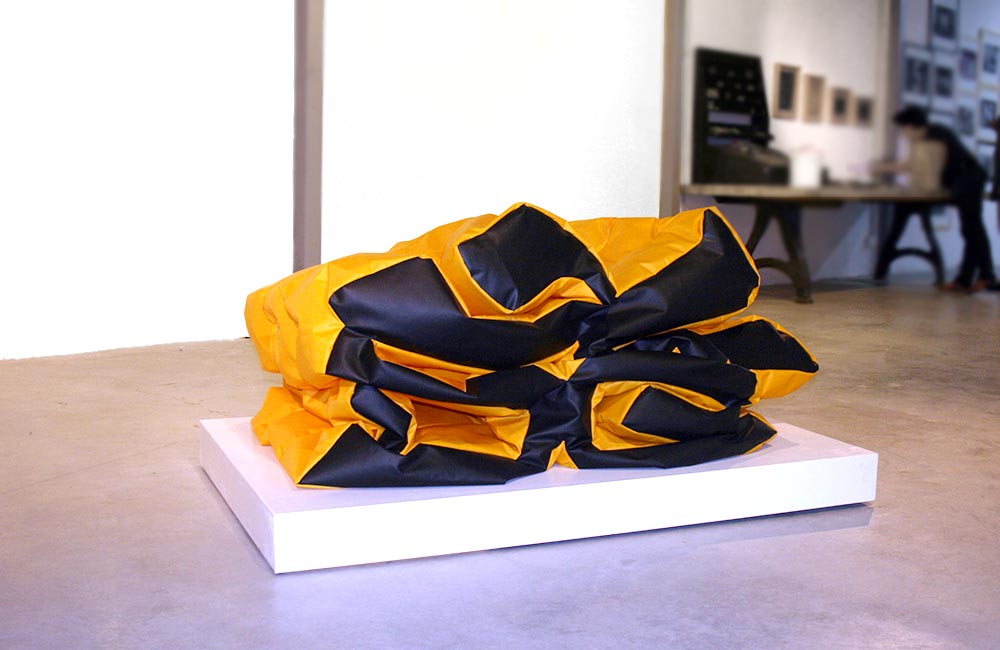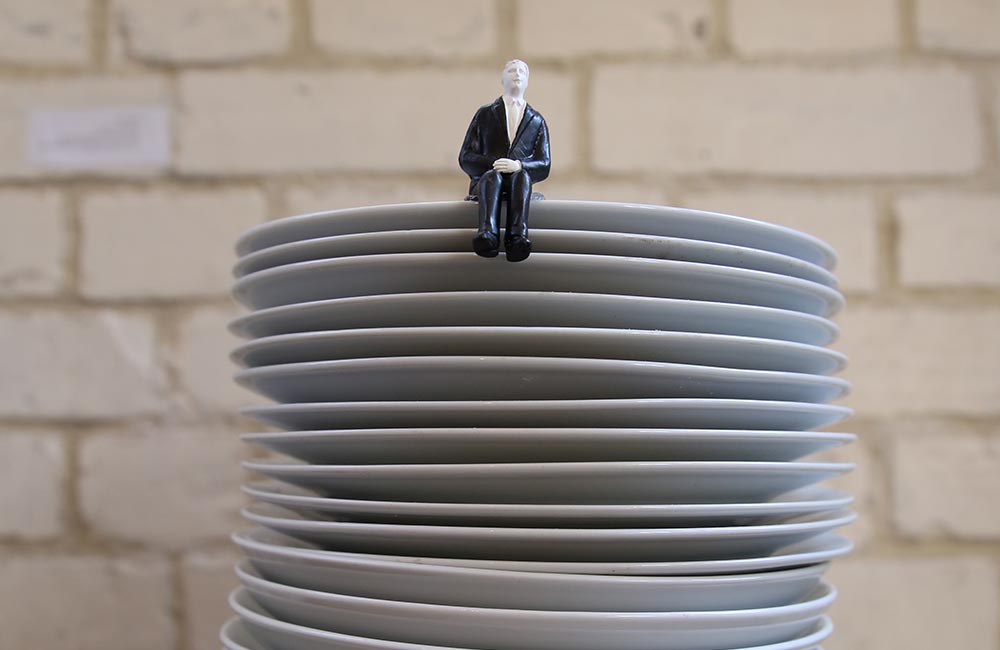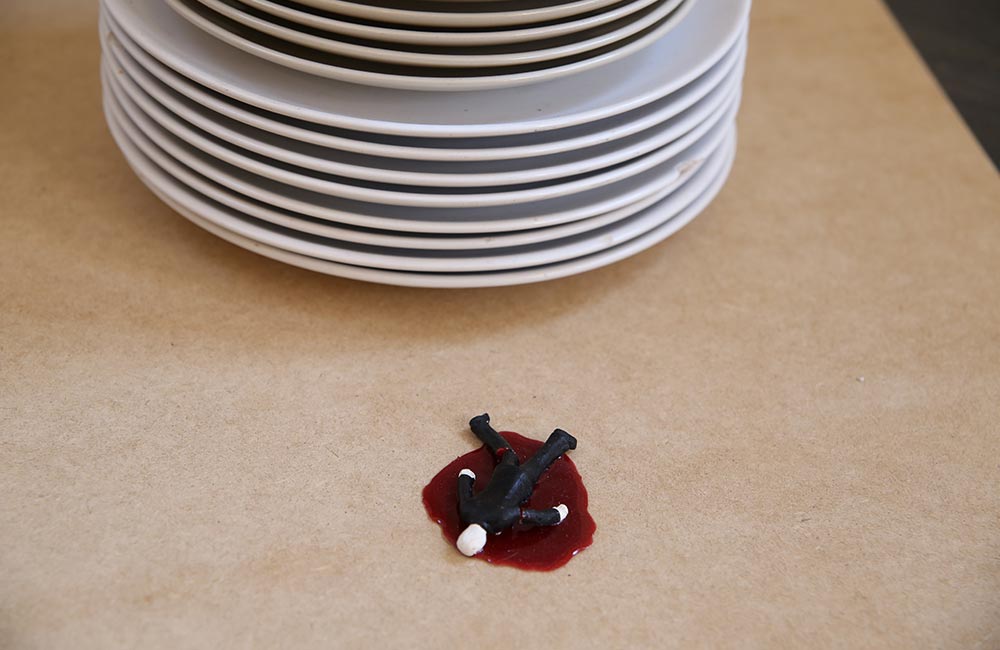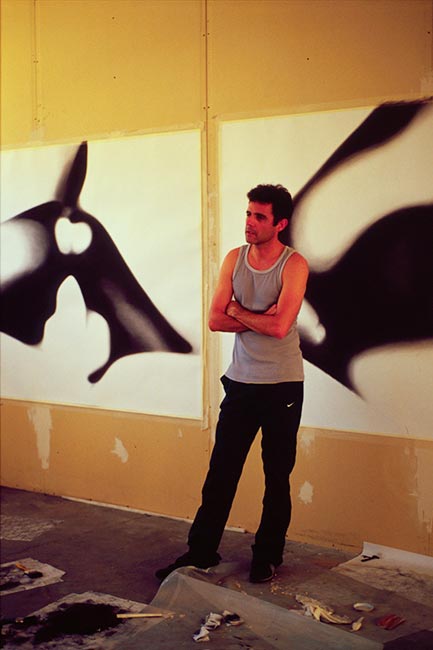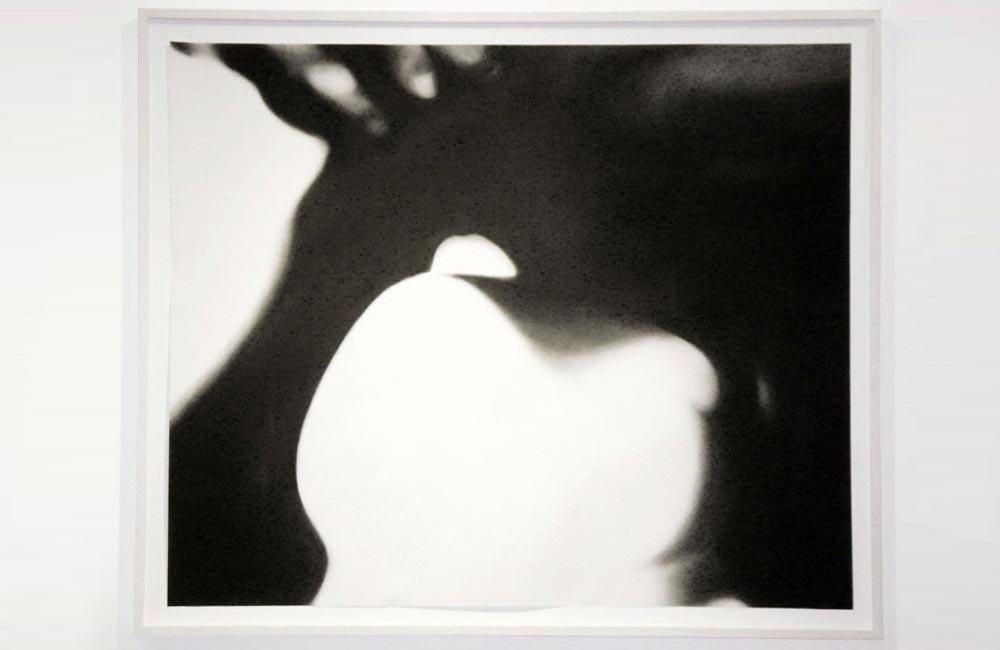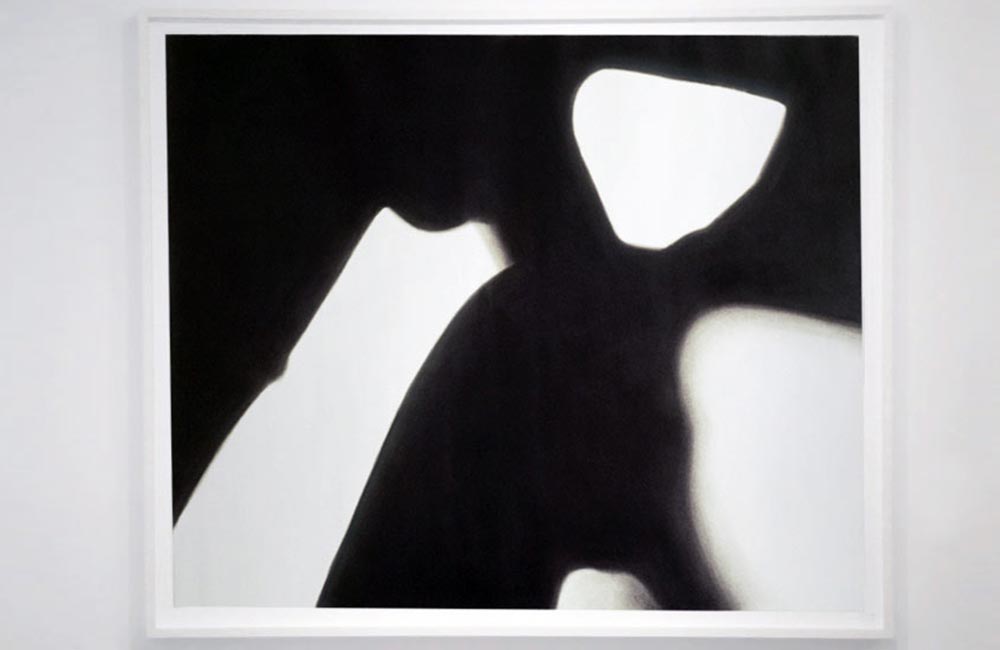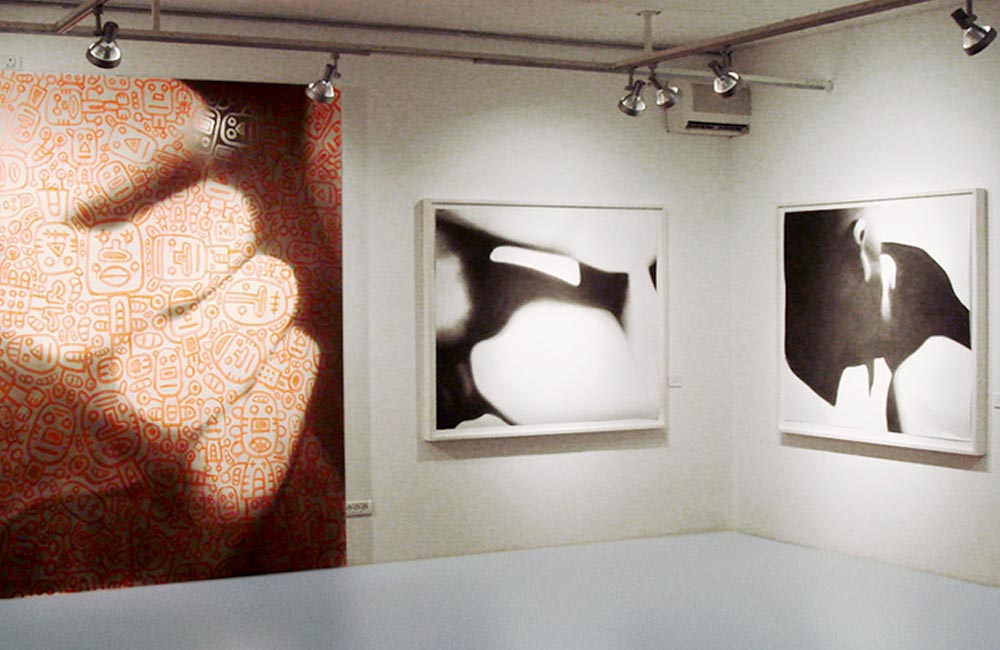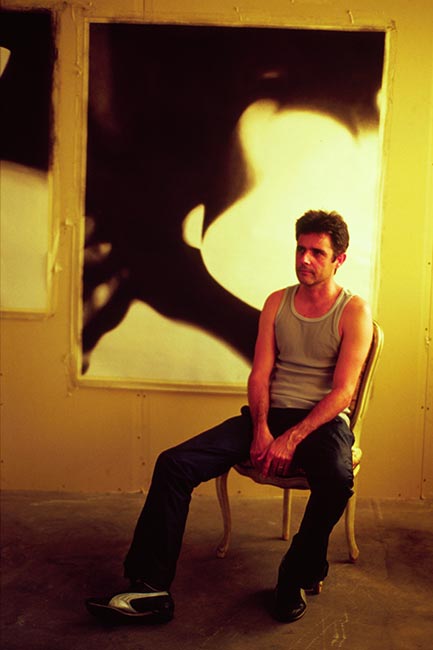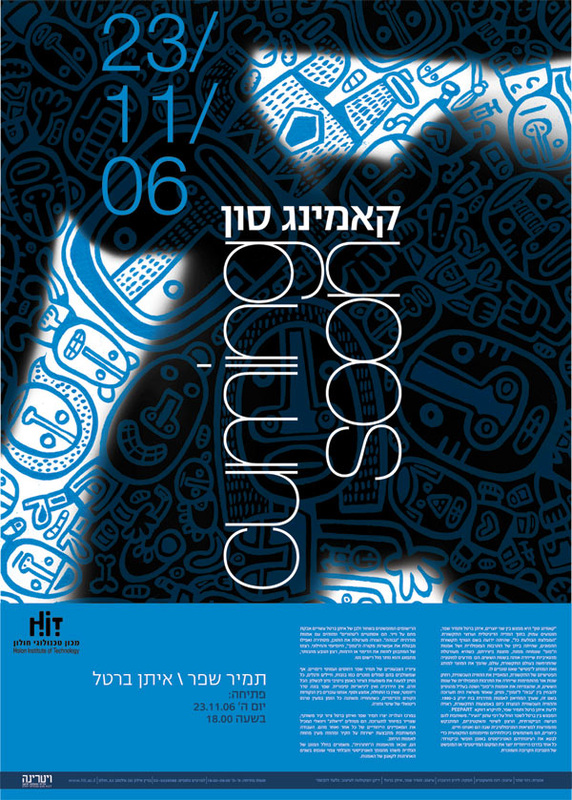Author: avivlic@gmail.com
Anti Heels
,Video Installation, 2017
The work Anti Heels presents a pair of high heeled shoes placed on an apparatus whose shape is reminiscent of Tatlin’s Tower. The climb up the surrounding staircase brings the visitor closer to the shoes placed in its upper section, but forces him to look at them from beneath. While climbing the apparatus he can see that these are not ordinary high heeled shoes, since the heels are located in the front part of the shoe. Television screens enclosing the space present a model wearing such a pair of shoes and walking along a circular runway, tripping from time to time but rising and continuing to march. In order to keep her balance she is forced to walk bent over, and her body stoops forward in an anti-feminine and ridiculous posture. The malformed structure of the shoe gives rise to a deconstructivist process that awards visibility to cultural mechanisms that lie at the basis of the feminine posture related to high heels: such shoes are the product of a sexist, chauvinist society, which forces women to distort their bodies in order to adapt them to the feminine image that became rooted as an idea in the capitalist Western culture, in which the female body was objectified.
Neo-Bartalism, Solo Exhibition, 2017
website
Neo-Bartalism integrates techniques of new media – surveillance technologies, robotics, image processing and machine learning – with videos and physical objects produced with low-tech tehnologies. This is in many ways a nihilistic exhibition, but poetic and full of humor. It deals defiantly with mechanisms of control and propaganda, with capitalist mechanisms, with feminism, religion, stereotypes of the Israeli character, and with the Arab-Israeli conflict. It presents clichés and at the same time ridicules them and deconstructs them to a level that is empty of content. It is at once political and a-political, concrete and abstract, deals with global issues and touches on the most delicate facets of social and political reality in Israel.
The Final Project
,a series of photographs, 1996-1999
40x30 cm (each)
The Final Project documents deterioration – changes undergone both to the body and daily objects: a hand fracture, wilting flowers, hair loss, the fleeting presence of a daily newspaper.
The artist and the objects are presented in a series of photographs that comprise the piece, situated on a wooden chair that once belonged to Bartal’s grandmother. It was the chair on which she use to sit while cooking – a simple, old-fashioned Israeli chair, built by an Israeli company called “Totzeret Ha’aretz” (which translates to mean, “Product of Israel”). This is a functional object – simple and white with clean and unsophisticated lines, free of design pretensions – which deteriorated and grew dirty over the years. Time has infected simplicity and cleanliness, and insists on granting it meaning, memory and perhaps even historical-design significance.
The chair, with all of its references to the history of art (Christian iconography, still life, relation to space), constitutes both a connection to the biographical roots of the artist (his grandmother, his childhood) and represents the anti-design that shaped the identity of the artist.
The presence of the object on the minimalist chair lends it a dramatic stage. These artistic choices recall the minimalist expression of art’s formalist movement.
Among the objects photographed on the chair is a Furby doll, which, at the time of the piece’s creation, was a consumer hit among childen (but has since lost its appeal); a sad bouquet of flowers, radiating in its loneliness on the chair; a broomstick (reminiscent of Russian Formalism – the synthetic state of the shapes, the composition and geometry that they create); and a simple electric heater attempting to thaw the cold space framed by the photograph.
The piece is in dialogue with Bartal’s personal history and with his attraction to the street, to arbitrariness, to the poeticism of the banal, to disorder as a means of creating order. Life, for him, is not methodical. He has no ordered plan.
Sanobon
,Toilet deodorizer on canvas, 2009
120x90 cm
The work Sanobon (an Israeli toilet deodorizer) is made out of two plastic toilet deodorizer units, dripping their colored cleaning detergent on a large canvas in real time. “Sanobon” deals with the aesthetics of North American minimalist art of the sixties, ridiculing and dismissing the art work and consequently the artist’s role in its creation.
The continuous splash of color on the canvas resembles the act of flushing the toilet, simultaneously erasing itself while being created, therefore challenging the creative process itself. The colorful, constant and fragrant movement invites the viewer to a pleasurable experience. Although Bartal gives the work its humoristic character (drawing pleasure from watching a cheap and accessible daily detergent, used for disinfecting our most intimate body fluids) he also attempts to push and explore the boundaries of the artist’s responsibility for his work.
Sanobon changes continuously – in fact one could claim that it is less about the material and more about the idea – and calls into question the role of the artist as he has very limited control over the work’s final state. In this sense this work comes to express the idea behind it more than its materiality. The gravity and the chemical reaction of its elements influence the work as much, or even more, than the artist’s choices; the artist, in this work “flushes his labor down the artistic drain”.
JUDE
,Installation, 2013
heart rate sensor, inflatable PVC, 150x140 cm
The work creates a jarring conflict between the word Jude, with its charged historic meaning, and the light, shallow execution that is unable to contain its burden.
The confusing pop inversion (as a re-make of pop artist Robert Indiana’s LOVE) subverts the original and deplorable meaning of the “yellow badge” which was constructed from distorted shards of Hebrew letters to create the word JUDE.
The Nazi regime used it to forcibly label the Jews of occupied Europe during and before World War II.
Observer is caught between the initial frivolity flowing from the work, and darker, more complex feelings. He is forced to take part in the work: He is asked to hold a special bar, measuring his heart rate – the installation inflates only if the pulse of the observer’s heart proves that he has been moved by the work. Can the creation construct a new image: LOVE JUDE?
Angry Chair
,wood, rubber, leather and stainless steel, 2011
160(h) X 100(d) cm
Angry chair is a blow up of a slingshot – an ancient weapon or a children’s toy. Bartal sculptural creation presents a new use for the weapon as a rocking chair. The piece presents both a child’s fantasy (a game that can make whoever plays it fly high into the air) and a dangerous weapon (an object through which large stones can be thrown). The name of the piece references the popular iPhone game “Angry birds”, thereby linking an old object with a contemporary and advanced technological development.
The design is inspired by a familiar ancient object, which can be made from found materials – a weapon accessible for all. The design brings the “weapon of the proletarion” into the leaving room, thus creating a dialogue between its original purpose and its “non design”, the sophistication of bourgeois design and its collectors.
The design uses elements of “gestalt” – an object is created using its own original materials. Similar to the use of language in the texts of the work “The Walking Man”, here too Bartal employs techniques of deconstruction and reinvention.
Evident in the work is the bold juxtaposition of the materials that comprise the slingshot: on one hand, the wood, leather and rubber, materials from which basic slingshots are made. On the other hand there is the base on which the piece is placed, which is made of polished stainless steel. This juxtaposition helps in disconnecting the object from its original use, charging it with a new meaning and function.
SuicideS
,Porcelain, 2016
Lunch Break 15:32
A part of series of tiny porcelain dolls scattered in surprising places in the city and seem to fall and suicide once touched them
For my Art
,leather, epoxy, aluminum & paper, 2010
50x20 cm
The work For my Art does not wait for its viewers’ response. Instead, it turns to them, as if asking for their reaction: “donate me”, “don’t pass by without stopping”, “help me create my art”, “respond”, “get involved”. A beggar with a golden arm touches on a very charged issue in the art world: the relationship between the art work and the need (or the will) to market and sell it – in order to make a living and profit from it.
In his ironic way, Bartal presents the tendency of many artists to “beg” to gain support for their art, and even to turn this tendency into a habit, or a career.
The viewer cannot stop himself from asking some critical questions: what is the relation between a work of art and its manipulative monetary value? Is it right for the art work to go out to the street and ask for donations? Does any artist really need financial support? Or can artists disconnect from their patrons and work independently, without the “crumbs” that fall off people with means.
Cumming Soon
,A painting series / 2007
charcoal oxide on paper / 120x150 cm (each)
The painting series “Cumming soon” presents enlarged close ups of scenes from hard-core pornographic films. The images are blurry and almost undecipherable. The enlarged details have a topographic character, in which the positive and negative spaces resemble letter shapes.
Bartal attempts to decode the abstract geometric shapes arising from the scenes, and even though the images are blurred and unclear, the shapes still have a violent essence, an aggressive nature, in dialogue with their source. By detaching the images from their sexual context, Bartal explores the form and the content, extracting the clean compositional elements from a product whose original intention was totally different.
The works are drawn using a tissue napkin (an accessory associated with pornography viewing) to spread the charcoal oxide. The paintings recall publicity posters for porn films outside cinemas of disrepute, but the images are blurred. Bartal thus consciously uses the aggressive formalistic aesthetics that characterized the revolutionary movements of the beginning of the twentieth century, especially Russian constructivism.
Bartal confronts the sensational aspect of pornography with aesthetic tools commonly used in design (geometry, typography). The result is a painting series that is both appealing and disturbing at the same time, which succeeds on various levels of interpretation.
Cut
,natural soil, concrete and oil / 1996
300(h) x 15(w) x 150(d) cm
A narrow, deep and precise slit in the earth – three meters long, one and a half meters deep – filled with oil.
The piece was displayed at the 1996 Ein Hod Biennale. In the Biennale’s accompanying catalogue, the work was presented alongside images of hands covered in warts as a result of the work that went into the creation. The soil is typically Israeli – red loam soil, rocky, from an Ein Hod olive grove. The piece was created by cutting the earth’s surface, calling to mind a human cut caused by a sharp razor. Such a cut aesthetically and accurately reveals the flesh underneath the skin, in a manner that heightens and intensifies anxiety over the associated injury and pain. Like other works by Bartel, Cut is biodegradable, and will ultimately cease to exist – a subversive act of art that may reveal itself and may not.
Cut was created in 1996, in a period of highly charged political tension, marked by internal rifts following Yitzhak Rabin’s assassination, suicide bombings in Israeli cities and riots in the occupied Palestinian territories. Identifiable in the piece a reference to a violent struggle over land – a struggle that wounds it.
The work is charged with a dimension of mystical anxiety: the earth is unstable, and the work of art is effectively swallowed into the space in which it exists. The work can only be seen by approaching the abyss, and even then what is visible is not fully clear. The certainty of existence on earth fades when its surface is pierced.
The cut also resembles a sexual organ, Mother Nature’s vulva, from which new life emerges. A hole in the ground presents the possibility of creating something new – planting a seed – but also of putting an end to existence: falling into the ditch, returning to the ashes from which we emerged.
In a sense, Cut turns the ground into a living organism. The gaping soil and the oil within it create the feeling of exposed life underground, like the blood beneath the skin or the soul inside the flesh.



